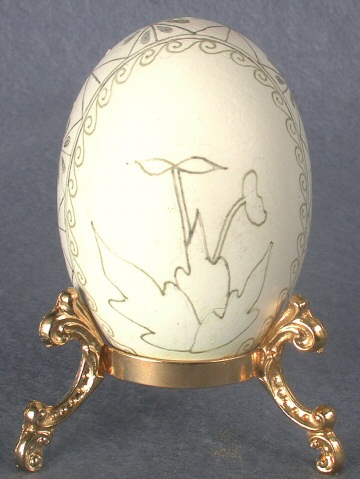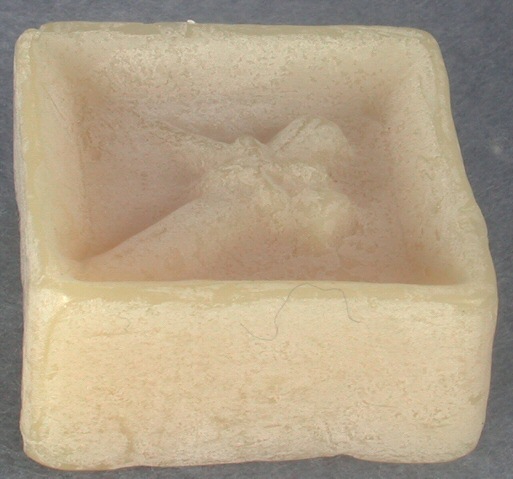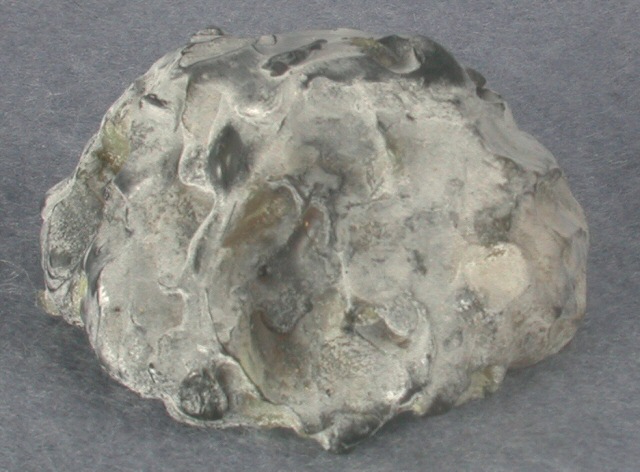From Shell to Symbol: Art of the Ethnic Easter Egg
The Wax-Resist Process
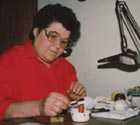
Betty Pisio Christenson decorates
an egg using a wax-resist
technique and shellac, 1986.
Photo by James P. Leary
These five eggs show five steps in the wax-resist process of making pysanky, intricately decorated Ukrainian Easter eggs. First, the artist draws the design directly on to the eggshell. Wax is applied to an egg using a wire tool, a kristka, to areas designated not to take a color. The egg is then dipped in a colored dye. The wax is melted off revealing the color beneath, and the process is repeated using another dye.
Betty Pisio Christenson of Suring, Wisconsin created these eggs. Her parents settled in Suring after moving from the Ukraine in the early 1900s. Christenson taught herself the technique for making pysanky after seeing eggs decorated by relatives.
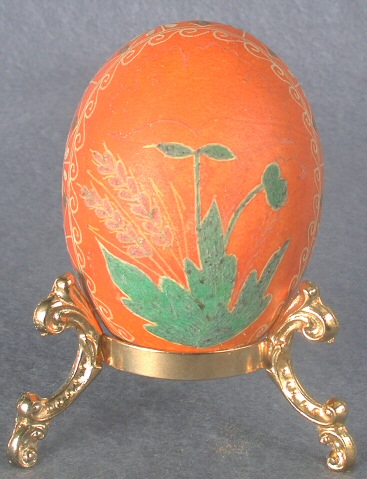
Step 2: Apply wax and dip into a dye color.
Wisconsin Historical Museum object # 1996.118.361
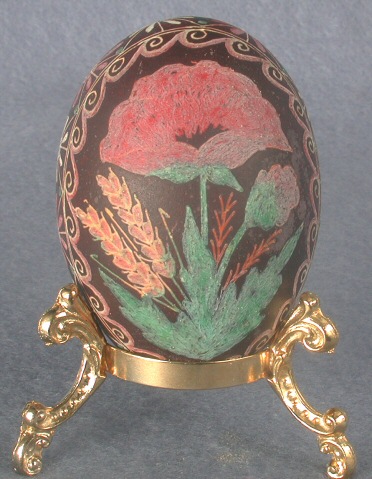
Step 4: Egg with wax after final dip into black dye.
Wisconsin Historical Museum object # 1996.118.363
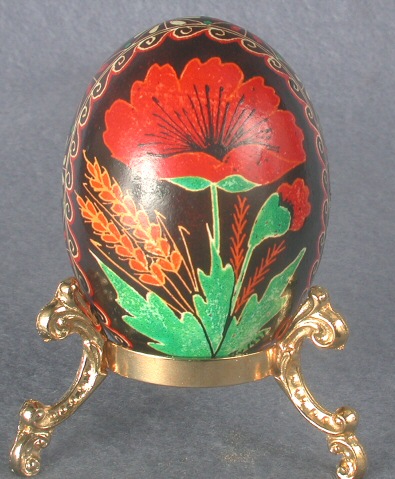
Step 5: Remove all wax, revealing the finished egg.
Wisconsin Historical Museum object # 1996.118.364

